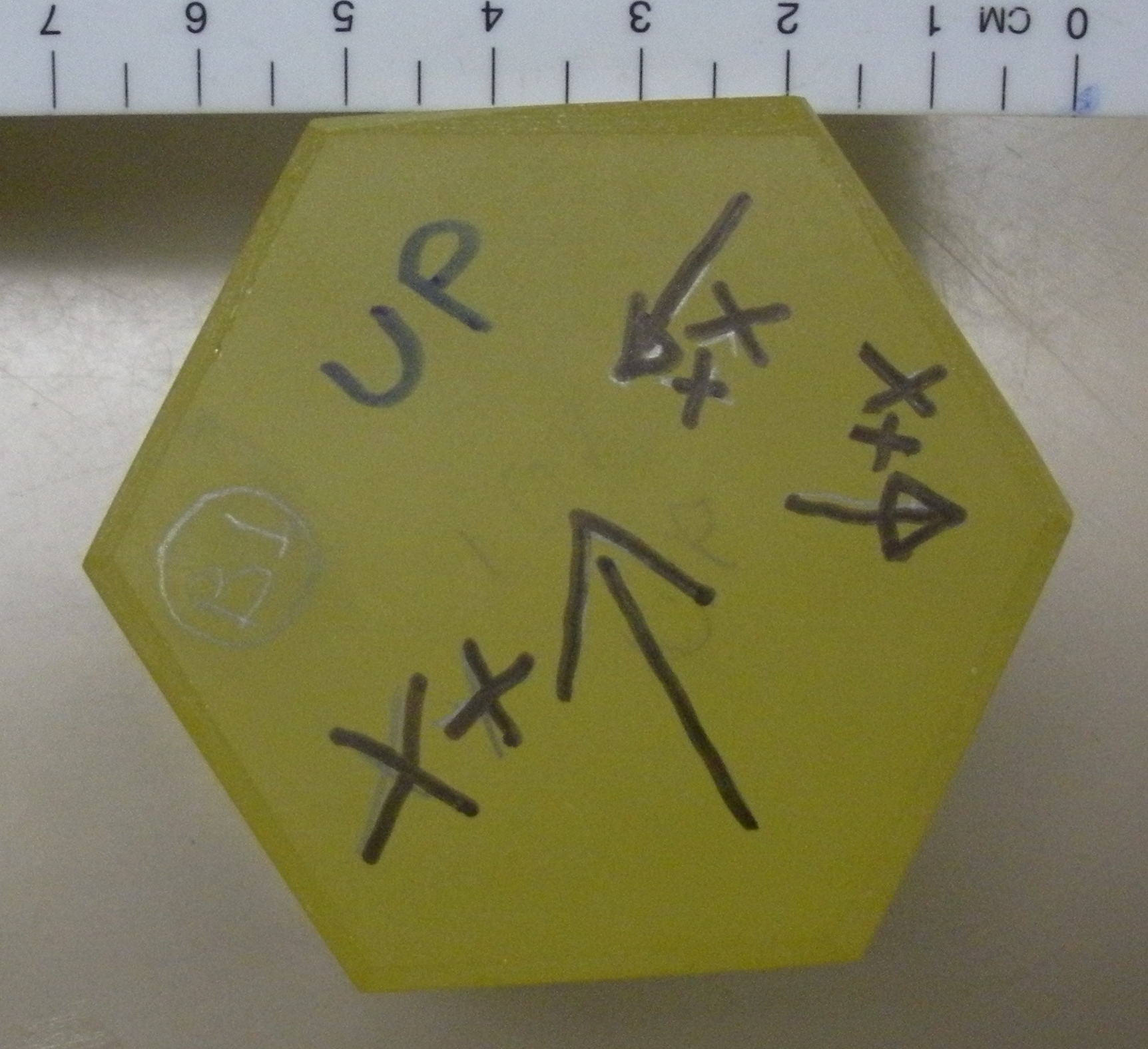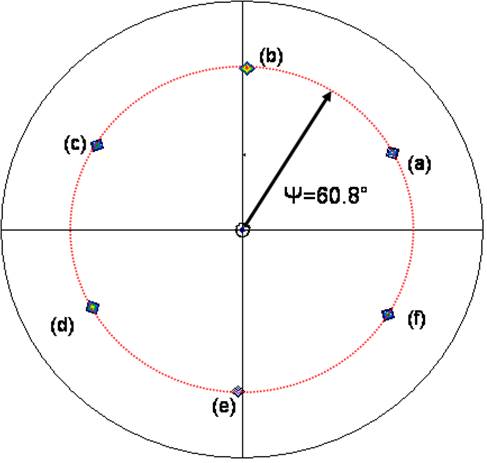Home
About
CV
Research
Publications
Links |
In
this work, X-rays were used as a tool to determine the absolute
orientation of langatate. By comparing the intensity of X-rays
scattered off of certain crystalline planes, it is possible to
determine, for instance, the +x from the -x crystal direction (see
picture below). This was accomplished by identifying the
location
of the planes using a pole figure (image at bottom left) and then
collecting high resolution data from each plane to determine the total
intensity of scattered X-rays (bottom right).
Details about this work, as well as tables of the relative scattering
power of a large number of crystal planes, can be found in this paper.
Click on any image to enlarge:

Top view of a large langatate single crystal. The orientation
of
the crystalline axes (marked with sharpie) was determined by
mechanically squeezing the crystal and observing the electric potential
polarization created by the piezoelectric effect. For smaller
and
more delicate samples, mechanical squeezing can be destructive and is
not an option.
|

A pole figure showing the (50·2) and (50·
2)
planes. The distance from the center represents the
inclination
of the crystal with respect to the Z axis while the azimuthal angle
represents the rotation of the crystal about the Z axis.
|

Integrated intensities of the poles in the image on the left.
By
measuring the total scattering power of different crystal planes, it is
possible to nondestructively determine the absolute orientation of a
langatate crystal.
|
|



